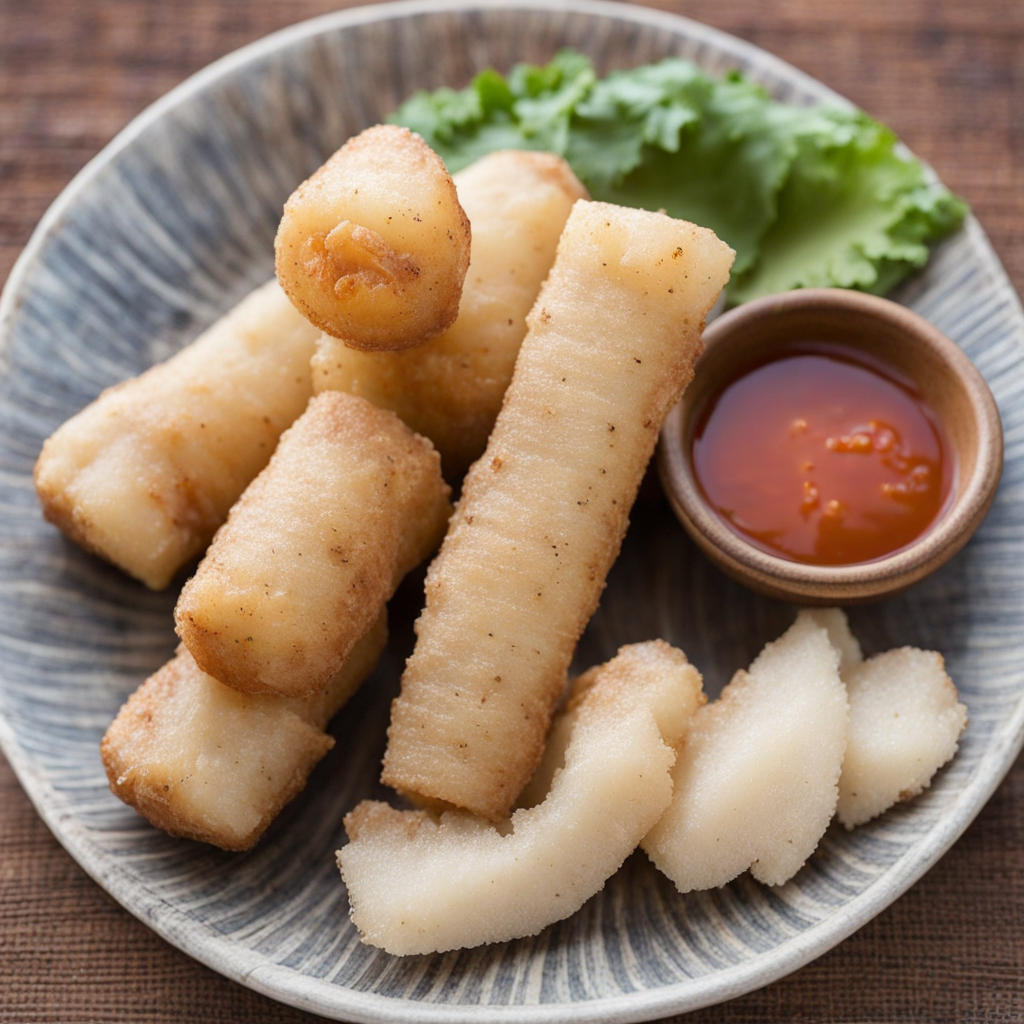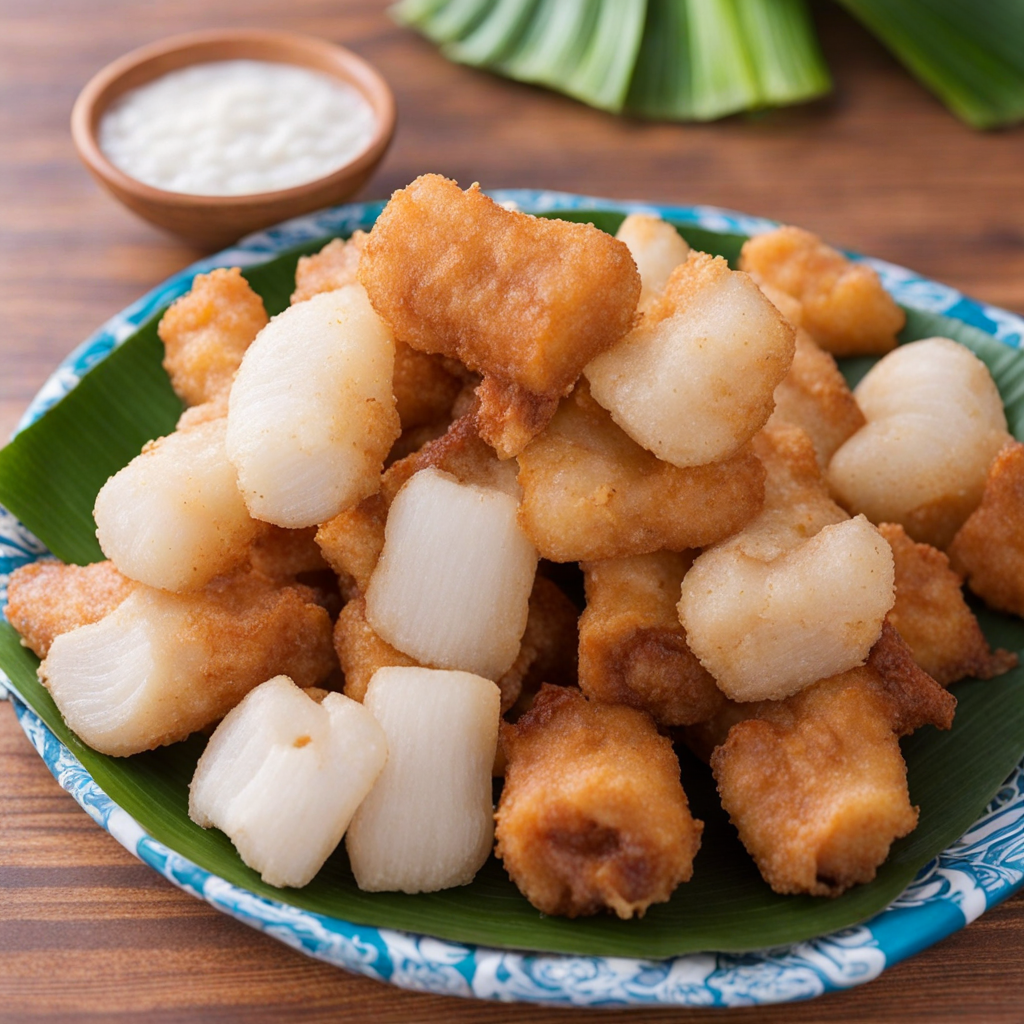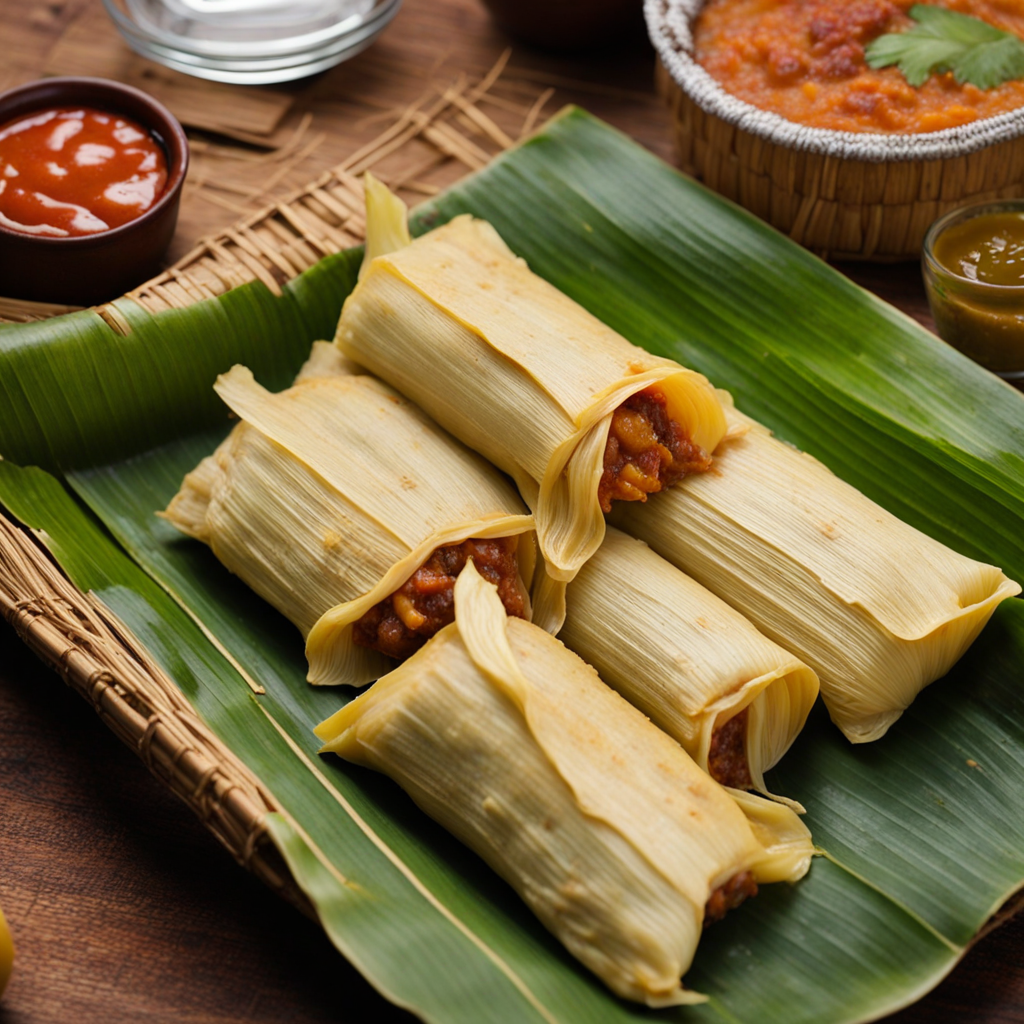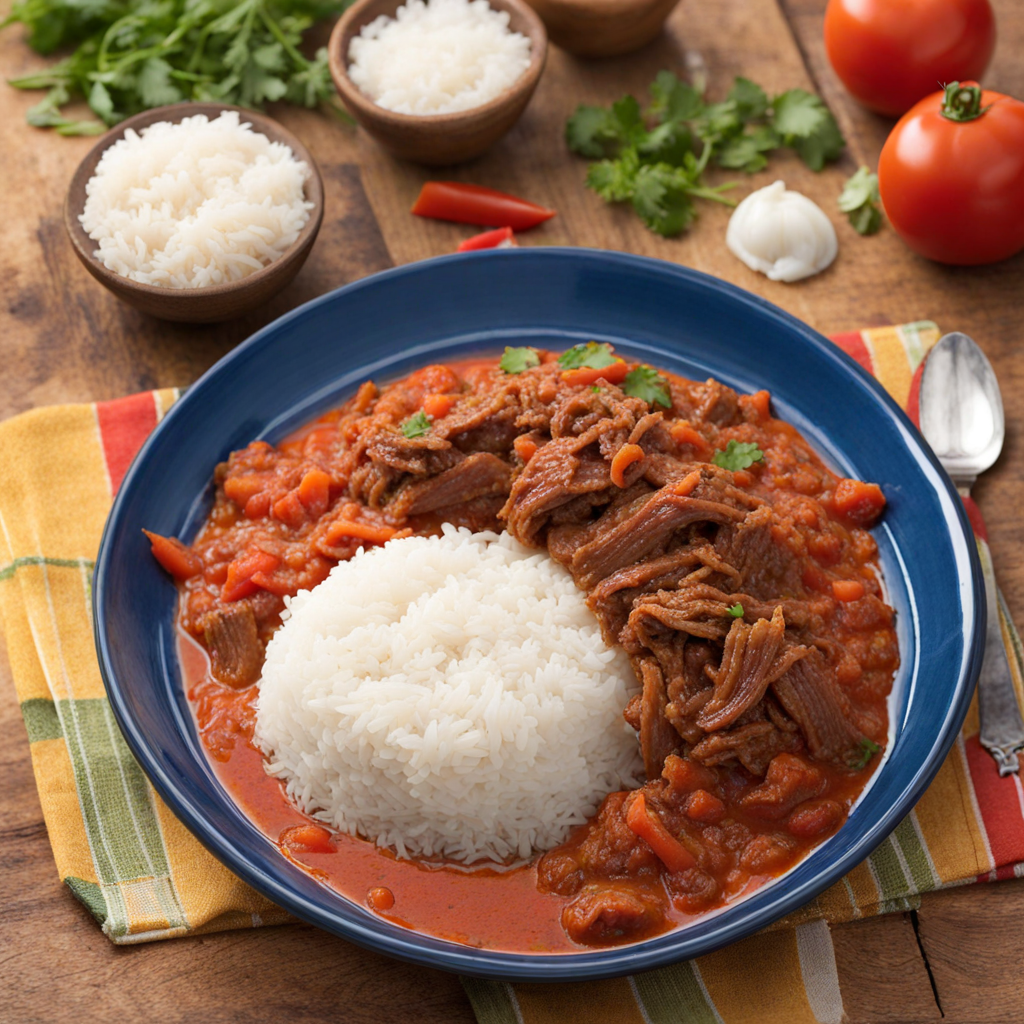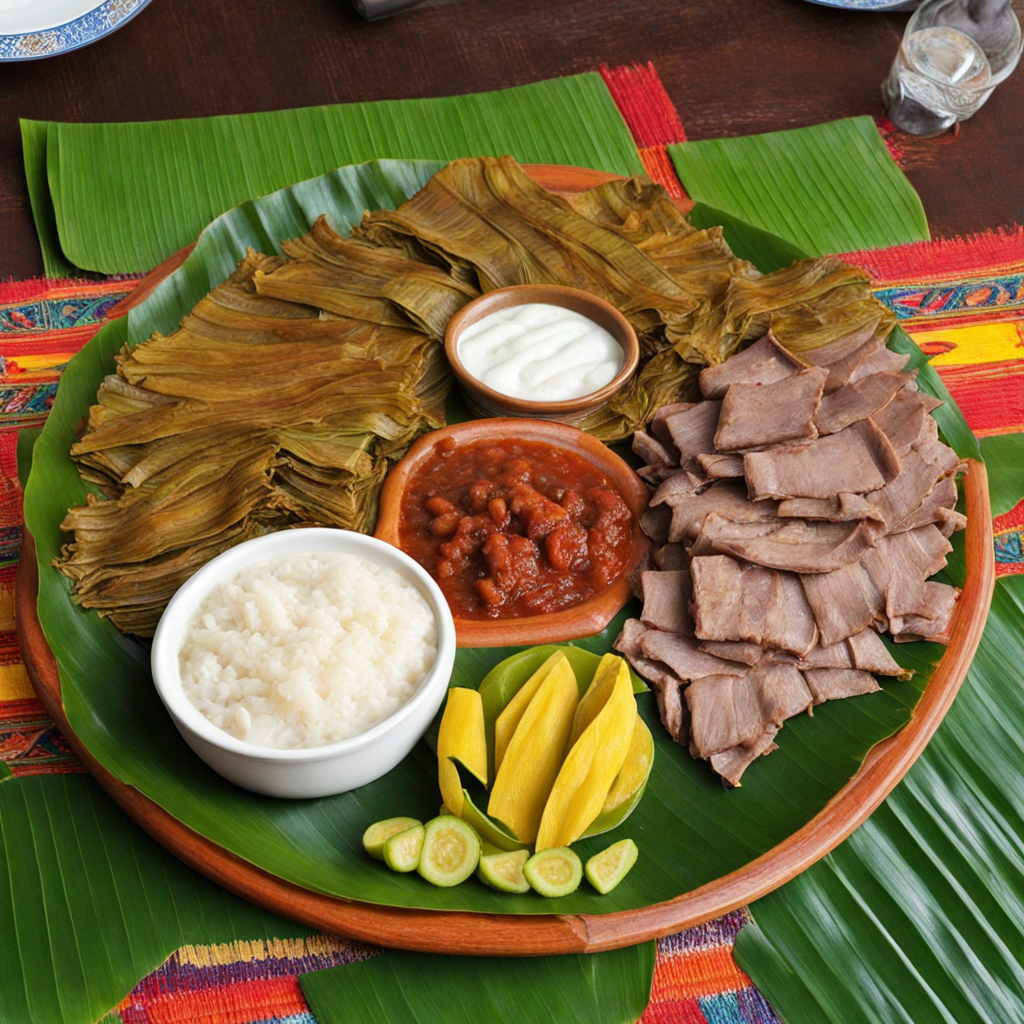Yuca con Chicharron
Yuca con Chicharron is a vibrant and hearty dish from Guatemala that showcases the rich flavors and textures of traditional Central American cuisine. At its core, yuca—also known as cassava—is a starchy root vegetable that is boiled until tender, resulting in a creamy, slightly nutty flavor that serves as the perfect base for the dish. The yuca is often accompanied by chicharrón, which consists of crispy fried pork skin, adding a delightful crunch and savory depth. This combination creates a satisfying contrast between the soft, pillowy yuca and the rich, crispy chicharrón, making each bite a delightful experience for the palate. The dish is typically served with a side of tangy tomato salsa or a fresh chimichurri, elevating the flavors even further. The salsa not only adds a pop of color but also a zesty brightness that complements the richness of the pork. Many enjoy adding a squeeze of lime juice for an extra layer of freshness that cuts through the dish's heaviness. The interplay of textures and flavors—creamy, crunchy, spicy, and tangy—makes Yuca con Chicharron a truly irresistible dish that embodies the essence of Guatemalan fare. Yuca con Chicharron is often enjoyed as a casual street food or a beloved family meal, making it a social experience as well as a culinary one. Sharing this dish with loved ones is a common tradition, as it brings together flavors and stories from generations past. Whether enjoyed at a bustling market stall or around the dinner table, this dish not only satisfies hunger but also invites diners to explore the rich cultural heritage of Guatemala, all through the lens of its delicious cuisine.
How It Became This Dish
Yuca con Chicharrón: A Culinary Journey through Guatemala Origins and Ingredients Yuca con chicharrón is a beloved dish in Guatemala, where the humble yuca (also known as cassava) meets the crispy, savory goodness of chicharrón (fried pork cracklings). The roots of this dish can be traced back to the indigenous peoples of Central and South America, who have cultivated yuca for thousands of years. Yuca is a starchy tuber that thrives in tropical climates, making it a staple food in many countries, given its ability to grow in poor soils and its resilience in the face of drought. The indigenous Maya were among the first to domesticate yuca, using it as a primary source of carbohydrates. They created a variety of dishes utilizing the tuber, from simple boiled yuca to more elaborate preparations. The arrival of the Spanish in the 16th century introduced new culinary techniques and animal husbandry to the region, notably the practice of raising pigs, which eventually led to the popularization of chicharrón. Chicharrón itself has deep roots in Spanish cuisine, where it refers to the fried pork rinds or cracklings that are a common snack throughout Spain and Latin America. The combination of yuca and chicharrón in Guatemala represents a beautiful fusion of indigenous and colonial culinary traditions, symbolizing the rich tapestry of Guatemalan culture. Cultural Significance Yuca con chicharrón holds a special place in Guatemalan culture, often enjoyed as a street food or during family gatherings and celebrations. It is not just a dish; it is a cultural emblem that connects people to their heritage and the land. In many regions of Guatemala, it is a common sight to see vendors selling yuca con chicharrón from makeshift stalls or food carts, where the enticing aroma of fried pork mingles with the earthy scent of boiled yuca. The dish is typically served with a side of tomato sauce or salsa and a fresh salad of cabbage, radishes, and lime, which adds a refreshing crunch and balances the richness of the fried pork. This combination enhances the communal experience of sharing a meal, as families and friends gather to enjoy the flavorful interplay of textures and tastes. Development Over Time As Guatemala's culinary landscape evolved, so too did the preparation and presentation of yuca con chicharrón. The dish has remained a staple, but regional variations began to emerge, reflecting local ingredients and cooking methods. In coastal areas, for example, you might find yuca con chicharrón served with a side of seafood or garnished with avocado, embracing the bounty of the sea. In urban settings, yuca con chicharrón has made its way into more formal dining establishments, where chefs often experiment with presentation or introduce modern twists that respect traditional flavors. Some restaurants may offer gourmet versions of the dish, incorporating local herbs, spices, or artisanal techniques to elevate the experience while still honoring its roots. Throughout the years, yuca con chicharrón has also become a symbol of resilience and community. During times of economic hardship or natural disasters, such as the volcanic eruptions or hurricanes that have periodically affected Guatemala, the dish has served as a comforting reminder of stability and tradition. Families often turn to simple, hearty meals like yuca con chicharrón, which can be made affordably and feeds many. A Dish for All Occasions Yuca con chicharrón is a versatile dish that can be found at various occasions, from casual street food stalls to festive celebrations. It is a popular choice during holidays and gatherings, such as Christmas and Independence Day, when families come together to celebrate with food. The communal aspect of enjoying this dish reinforces familial bonds and cultural identity, as recipes are often passed down through generations. In recent years, as globalization has influenced food trends, yuca con chicharrón has garnered attention beyond Guatemala's borders. It is increasingly featured on menus in Latin American restaurants worldwide, allowing a broader audience to experience its unique flavors. Food enthusiasts, chefs, and cultural ambassadors advocate for traditional dishes like yuca con chicharrón, emphasizing the need to preserve culinary heritage while also encouraging innovation. The Modern Palate and Future of Yuca con Chicharrón As the culinary world continues to evolve, yuca con chicharrón faces both challenges and opportunities. The growing interest in plant-based diets and sustainable eating has led some chefs to explore alternatives to pork, resulting in creative vegan or vegetarian interpretations of the dish. These adaptations often involve using mushrooms or alternative proteins that mimic the savory, crispy texture of chicharrón, allowing a new generation to enjoy the essence of this traditional meal without compromising their dietary choices. Moreover, the global movement towards recognizing indigenous ingredients has sparked a renewed appreciation for yuca, not just in Guatemala but throughout the world. Increasingly, chefs are sourcing locally-grown yuca and showcasing it in various culinary contexts, highlighting its versatility and nutritional value. Conclusion In conclusion, yuca con chicharrón is more than just a meal; it is a testament to Guatemala's rich culinary history and cultural significance. Its origins reflect the blending of indigenous and colonial influences, while its enduring popularity speaks to the resilience of tradition in a rapidly changing world. As it continues to evolve and adapt, yuca con chicharrón remains a cherished dish that embodies the flavors, stories, and spirit of Guatemala, inviting people to share in its delicious legacy for generations to come.
You may like
Discover local flavors from Guatemala


